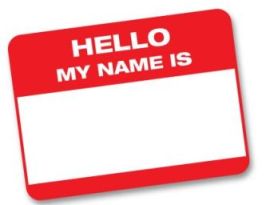If you’ve ever attended Consumer Electronics Show (CES) then you know it is a beast of a show with more than 4,000 exhibiting companies and covering the 2.6 million square feet of exhibit space is next to impossible especially as you are fighting through crowds of 170,000+. It might sound too overwhelming but having attended regularly since 1988 and as a marketer hoping to spot trends, I can assure you it is always worth the trouble. Inevitably, I leave CES with some new ideas, at least one new friend and a dousing of Vegas silliness.
With the 2018 CES right around the corner (Jan 8-11, 2018), I thought it would be helpful and interesting to record a special episode with the legendary tech guru Shelly Palmer. I first met Shelly back in 2010 (when I wrote about him as the prototypical personal brand on FastCompany.com) and have spotted his ubiquitous signs at CES ever since. [Blatant unpaid plug — if you are new to CES, have a limited time frame or just want to make sure you don’t miss the big trends while you’re in Vegas, then you’d be wise to sign up for a tour of the show by Shelly and his team at The Palmer Group.] As for my earlier point about Shelly being interesting to talk to, he didn’t disappoint!
In the podcast, we discuss why he’s excited about this year’s show and why expects to see more evolutionary products than revolutionary ones. We dive into hot topics like drones, cars, VR and AI among others. You’ll also hear Shelly school me on why I’m wrong to call Alexa (Amazon voice activation system) dumb just because she can’t infer the request Dear Evan Hansen from Evan Hansen when a Google search does that handily! The tech challenge aside, I still think she has some cognitive development work ahead of her! You can listen to the special episode here.
Here are a few other highlights from the interview:
Drew: What should marketers be paying attention to at this year’s CES?
Shelly: This year at CES, we’re going to have a really good look at integrations between the natural language understanding tools and the physical world. I’m pretty sure you’re going to see a lot of augmented reality because that is the toolset that is most flexible. You need great programming skills but it also yields amazing benefits – everything from a doctor looking into an incubator and seeing a heads-up display of all of the vital signs of the patient to gameplay and 100% of everything in the middle. You’ll see a lot of augmented reality. Drones and machine learning. Drones are now self-flying for the most part and there’s a bunch of companies who have taken to creating machines that not only fly themselves but with either high definition or 4k cameras in them and in some cases 8k cameras in them. And in some cases infrared cameras in them. They’re doing materials processing in the air. They can look at an insurance company like Travelers, who are the number one user of drones in the United States, and put a drone up in the air to look at the exterior damage. They can understand what happened to your roof in the air and file and process your claim without having someone go out to your house. When you think about a hurricane like we’ve had and the ability to quickly process and quickly get people the help they need who are insured, you’ll see a lot of that at CES. A lot of drone companies showing off their ability to have not only self-flying drones, but drones that can carry bigger payloads, can take better cameras with them, and fly in inclement weather or in adverse conditions that you wouldn’t have seen before. The drone story is going to be pretty big.
Drew: What else is going to be big?
Shelly: The cars are going to be out in force – driver assistance of every kind. Autonomy is coming. There’s never a lack of cool cars at CES. It’s more fun than the auto show because for us who are all semi-geeks about the technology, they come and they put their tech foot forward as opposed to their design foot forward or this guy with 500 horsepower or whatever. You’re going to see great TVs, but we haven’t had a year with a bad TV in 20 years. Let me tell you about the TVs. I can tell you I haven’t seen them yet. Let me tell exactly what I’m going to say when I get to stand in front of any TV; it’s bigger. It’s thinner. It’s got a brighter picture, higher dynamic range, wider color gamut, bigger screen, thinner. That’s sort of the joke at CES. It used to be a TV show. Now the TVs just get better.
Drew: Is there anything new that’s coming to CES?
Shelly: What you will see this year that you haven’t seen so much before is how well integrated the home is becoming. Honestly, it is Alexa’s voice services and all of NLP systems that have caused this. Because if you think about it, when you walk in the house you have to open an app, tap a couple of buttons, open another app, and press a couple more buttons. It’s like, “Oh come on, stop it! I’ll just turn the light switch on.” But now you walk in and you say, “Alexa, lights on. Alexa, daytime scene.” Whatever you want. And boom, the house is set. The value proposition for consumers is so great. Everybody’s jumping on that. Look for integrations in ways you’ve never seen them.
